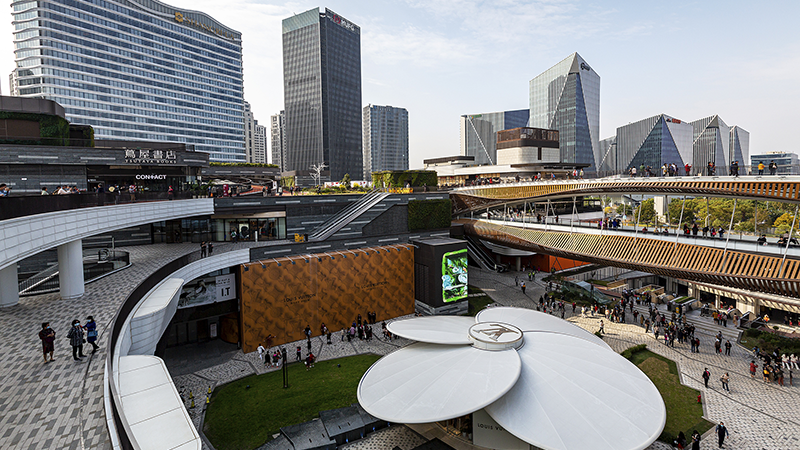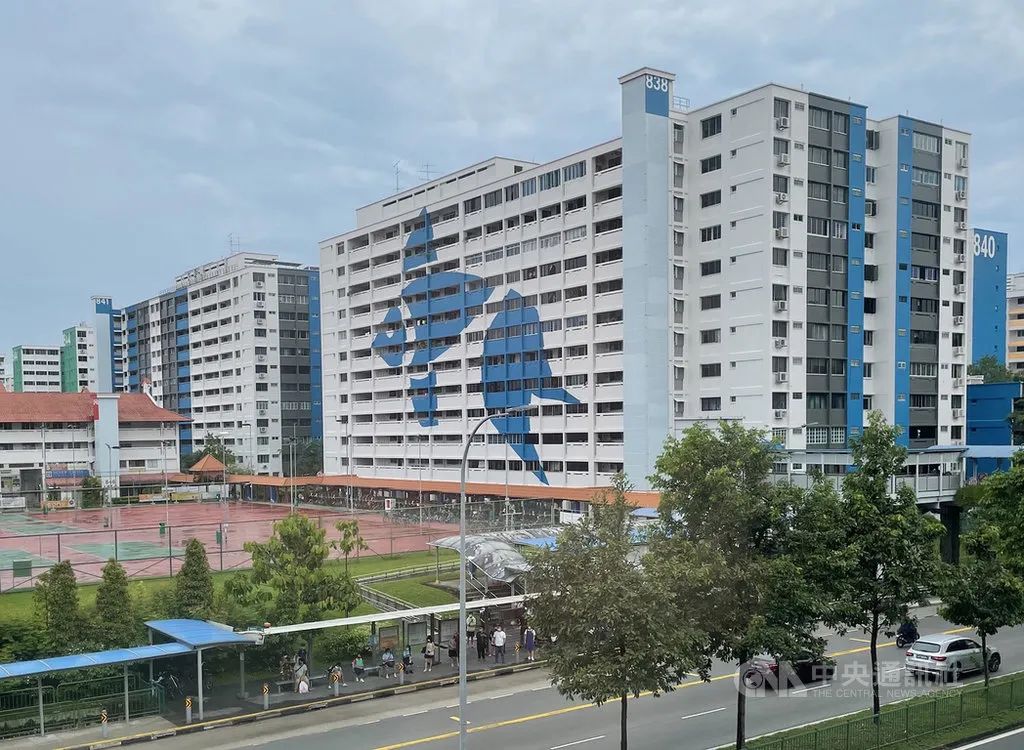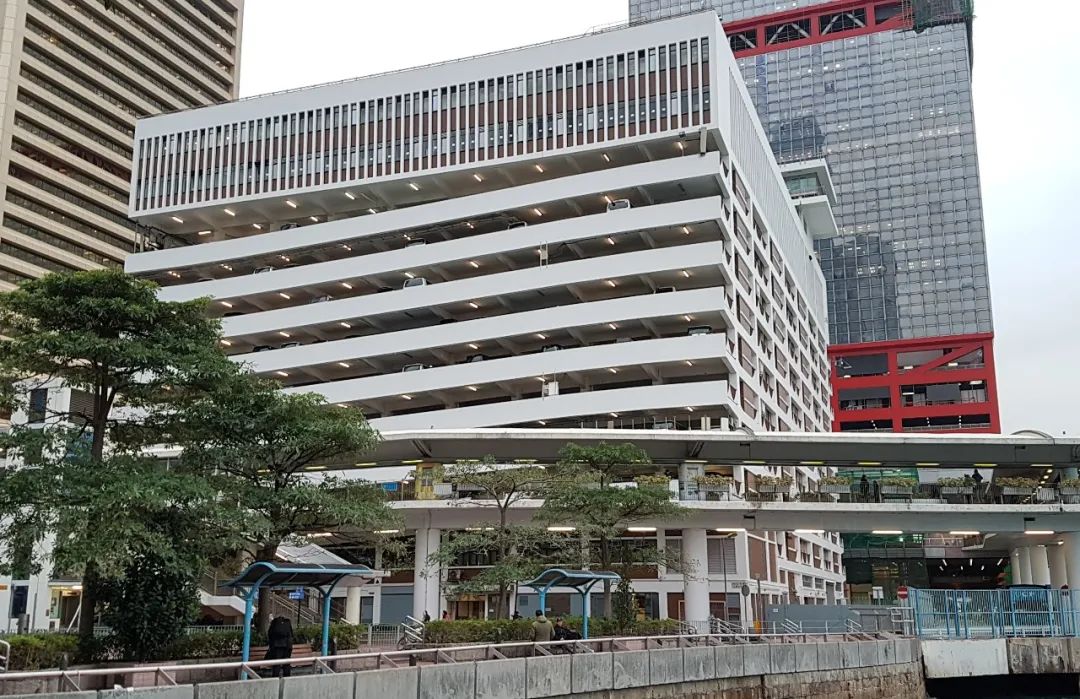Editor's Notes:The housing reform since the 1990s set off the tide of China's real estate market, which led to the rapid development of the real estate industry in the last two decades. However, while the real estate industry has become the locomotive for driving domestic demand, it has also exposed persistent problems such as "soaring housing prices" and "land finance", and has given rise to serious secondary problems such as "forced demolition". The real estate industry is still thundering. The current real estate industry is still thundering, "housing" policy has not seen obvious results, where exactly is the way out of real estate? Can the past glory be repeated?
Briefing · 2023.01.24
The housing reform since the 1990s set off the tide of China's real estate market, which led to the rapid development of the real estate industry in the last two decades. However, while the real estate industry has become the locomotive for driving domestic demand, it has also exposed persistent problems such as "soaring housing prices" and "land finance", and has given rise to serious secondary problems such as "forced demolition". The real estate industry is still thundering. The current real estate industry is still thundering, "housing" policy has not seen obvious results, where exactly is the way out of real estate? Can the past glory be repeated?
Some economists have suggested that real estate should be considered the pillar industry of the Chinese economy, but this paper points out that the peak of China's real estate development has passed and has kidnapped the Chinese economy for many years, and that it is important to weaken its economic function in the future and to invest its transformation opportunities in the social function of real estate. In other words, the current negative effects of real estate on society stem from structural problems, and it is the inequitable distribution of housing that we urgently need to address, rather than the lack of real estate development.
In terms of thinking, to embark on a path of coordinated economic and social development, real estate faces an opportunity to correct mistakes - we need to reposition the development pattern of real estate. In terms of specific practices, China's real estate market cannot be overly dominated by capital as in the United States, but can learn from Singapore's HDB system and rely on such platforms to provide most social services and political management. In short, only a good transformation of the real estate industry can help us achieve a Chinese-style modernization with the goal of common prosperity.
Real estate has played a large role in driving China's economic growth for a long time, so much so that some economists regard it as the pillar industry of the Chinese economy. Indeed, in this field, we have completed in less than 30 years what developed economies have done in more than 100 years, and have raised a large number of rich people while solving the problem of "economics of shortage" in the housing sector that emerged before the reform and opening up. Under the guidance of the so-called "GDP doctrine", real estate development has accelerated, and we have only considered the contribution of real estate to the economy (mainly the volume of GDP) and to local finances, without taking time to think about the impact of real estate on society as a whole, or even on the structure of the economy itself. Thus, it is easy to understand that real estate development so far has not only spawned more and more problems, but that a poor handling of it could even lead to a financial crisis. From any perspective, real estate has been kidnapping China's economy for too many years, and it's time to end it.
Real estate traps the future of young people
There are many signs that today's real estate is not in order and is full of chaos. The recent phenomenon of frequent real estate mines is just a product of the abnormal development of real estate. For a long time, real estate has exhibited several key characteristics.
First, the vacancy rate is too high. As the population declines (because of low fertility rates and population flows to second- and third-tier cities), real estate in third- and fourth-tier cities is accelerating its decline. Even in the overcrowded mega-cities of Beijing, Shanghai and Shenzhen, despite the fact that housing demand still exhibits rigidity, their vacancy rates still reach about 7%, and office vacancy rates in particular are surprisingly high. As of the end of the second quarter of 2022, nine of the country's key cities had Grade A office vacancy levels above 30% and were under greater pressure to destock; eight cities were in a manageable range of 20% to 30%, with Beijing, Shanghai and Shenzhen within 20%. Although this situation is related to the general economic situation, it is also related to the failure of many local governments to follow the laws of the market economy.

(Source from yicai.com)
Second, there are too many people without housing. Although the homeownership rate of Chinese households is not low, the urban housing supply is far from adequate considering the mobility of today's society. in 2020, the housing per urban resident in China reached 1.06 rooms, which is not a shortage, but still below the level of developed countries. According to OECD data, the highest number of rooms per capita is in the United States, with 2.4; the average value of OECD countries is 1.7 rooms [1]. Moreover, the current paradox is that urban real estate has become an investment area for the middle and upper income classes, and housing does not reach those who really need it. Despite the increasing number of big cities, except for a small number of city residents, most mobile people do not identify with the city where they work, and the city is just a place to work for them, not a place to live - not because they do not want to live in the city, but because they cannot afford to buy a house or are not qualified to do so.
Third, it is too difficult for young people to survive and thrive. The low fertility rate in cities has led to the need for more young labor input. Although cities have always been a place for young people to start their own businesses and innovate, they are becoming less and less youth-friendly. High housing prices are discouraging more and more young people. Empirically, innovation is a middle-class phenomenon because only the middle class can afford to take the risk of innovation. Owning a home is one of the main manifestations of the middle class. Because of the inability to solve housing problems for young people, innovation is weak in many cities. Realistically, first-tier cities are not only making it difficult for young people to afford their high housing prices, but even large and medium-sized private enterprises can hardly afford their high rents anymore.
It can be said that real estate has not only trapped the economy, but also the future of young people, and therefore the future of the country. There are few economies in the world that consider real estate as the backbone of their economy. Real estate is the backbone of society, because housing is the foundation of the family and the foundation of society. If the problem of real estate is not solved, there will be no stable foundation for society. Let's compare the example of the United States and Singapore. The United States is the world's number one economy, but its system is too capital-driven and has not solved the housing problem, resulting in a wide disparity between the rich and the poor in the housing sector. In times of economic downturn, housing owners have the right to evict tenants who cannot afford to pay rent, so there have been campaigns to boycott rent payments in some U.S. cities over the years. In Singapore, it's a different story. The income disparity and wealth disparity in Singapore is not lower than in the United States, but Singaporean society is stable [2]. This is because the Singapore government has effectively developed a government HDB system that effectively protects society and achieves at least basic social justice.

(source from CNA)
Real estate in China has been too capital-led for a long time, taking into account only the economic function and neglecting the social function. Both state-owned capital and private capital dominated, as the goal was to increase GDP and maximize profits. It was only after the 18th National Congress that China established the policy concept of "houses are for living, not for speculation". However, because the problems have been accumulating for a long time, we have not solved the structural problems of real estate, despite the great efforts we have made over the years to control the further vicious development of the real estate sector. Therefore, it is not difficult to understand the deep-seated problems of real estate that have been exposed one by one recently.
Real estate no longer needs to be a pillar industry
The serious problems that have occurred in real estate, which is considered a pillar industry, do need to be taken seriously. But does real estate need to become a pillar industry again, as some economists say? This question is not simple and requires some scientific thinking.
We cannot ignore the crisis that the real estate industry can bring. As a basic industry, the real estate industry has a long chain of industries involved, which can directly or indirectly affect the financial market, local finance, employment, economic development and social stability. The real estate industry absorbed a large number of bank loans, property is also the main collateral for financial credit, the stable development of the real estate market is directly related to the security of the financial system. Once a major problem occurs in the real estate industry, it will be difficult to avoid a financial crisis, and through the cascading effect, it will affect the real economy, causing massive unemployment and posing a great threat to the stability of the economy and society. From this perspective, we urgently need effective initiatives to stabilize the real estate industry.
But this is not a reason to define real estate as a pillar industry again. It is more important for people to realize that it is not realistic to let the real estate industry to support the next stage of China's economic development, especially for an economy as huge as China. From the experience of world economic history, no economy can rely on real estate for a long time to become a high-income country. Quite the contrary, if real estate is not handled properly, it can drag down the economy. Japan, for example, stumbled after its real estate bubble burst and fell into long-term economic difficulties. While emphasizing the pulling effect of real estate on China's economy, we need to see the negative effects real estate has on society. China's real estate has become over-industrialized and commercialized, and is one of the root causes of social inequity.
Globally, real estate is a highly social sector; it is not purely economic. It is a universal truth that "houses are for living, not for speculation". Empirically, if real estate is handled well, the economy can achieve sustainable development and society can achieve sustainable stability. In a word, real estate is one of the main tools to ensure basic social equity. Therefore, today, we should not continue to hope to rely on real estate to drive the economy, but rather ensure that real estate does not have an undue negative impact on the overall economy. China's real estate peak has passed and what is emerging is a problem of inequitable housing distribution rather than a problem of underdevelopment of real estate.

(source from www.ce.cn)
Big picture needed to solve real estate dilemma
Real estate actually faces an opportunity for transformation, an opportunity to correct previous mistakes and bring about harmonious economic and social development. From this perspective, much of the current local approach in coping with the real estate problem not only fails to address the underlying structural problems, but creates additional problems. Empirically, the essence of the approach everywhere is that the state pays the bill: either in the form of financial support from banks to control real estate mines; or in the form of acquisitions by state-owned enterprises. This is only a headache and foot-dressing approach, and is not in the interests of the financial system or the interests of state-owned enterprises.
Whether it is the financial system or state-owned enterprises, the rescue of real estate is mainly from non-market considerations. The financial system came to the rescue mainly for its own benefit, because the money of real estate developers are from the financial system. Once the real estate collapses, it is likely to turn into a financial crisis directly. This is not fundamentally different between China and the United States. But the problem is that the problems of the financial system are eventually passed on to society as a whole in various ways.
SOEs can also play a role in resolving real estate woes as an effective economic tool. However, state-owned enterprises cannot become real estate companies, and real estate management must not spawn huge bureaucracies. Today, some real estate companies in the private sector are acquired by SOEs in the event of a crisis, which is not a long-term solution. State-owned enterprises should focus on their own fields, and the real estate industry should not be "governmentalized", let alone "state-owned enterprises". A "takeover" but affect the normal operation of state-owned enterprises themselves.
To solve the real estate problem, first of all, is a problem of thinking, or the positioning of real estate in the overall society, and then is a system and policy design. In terms of ideas, it is necessary to jump out of the previous dominant real estate "GDPism", to establish a new real estate pattern, that is, from the perspective of the coordinated development of the economy and society to position real estate. As mentioned earlier, real estate is not simply an economic field, but more of a social field. If it must be associated with the economy, then it is at best a highly social economic field. It involves the basic fairness and social stability of a society, or as the ancients said, "those who have constant assets have constant intentions". Especially when "common wealth" has become the main goal of Chinese modernization, we absolutely cannot let real estate become an important source of social division anymore. Therefore, a long-term, beyond economic thinking is needed to view and solve the structural problems in the real estate sector. The real estate problem is not only a problem of structural imbalance in the economic sphere, but also a problem of imbalance between economic and social goals. In this regard, some of the policies commonly applied around the world today are just poorly equipped to deal with the immediate and intractable chaos, and lack a systematic and long-term view of development.

(source from Internet)
As far as the system and policy design in real estate is concerned, the lack of professionalism is the biggest problem at present. The government has already put forward the big idea that "houses are for living, not for speculation", but without an effective top-level design, officials in charge of real estate around the world generally lack a big picture of development and only "discuss things as they are". Local real estate policies are generally fragmented, with different stakeholders such as local governments, banks, state-owned enterprises and developers trying to meet different requirements. Effective system and policy design requires professionalism rather than meeting the needs of different vested interests. We need a "trinity" of industrialists, experts and officials to design the system. In terms of operational feasibility, a national survey could be conducted on a provincial basis to obtain accurate data. Provincial coordination of social service delivery has been proposed at the central level for some years, but so far no province has achieved this goal. Real estate is actually both an important area and an effective grip for provincial coordination. In a country as large as China, and with huge local differences, national coordination is not realistic. Only provincial coordination can reduce or even eliminate the huge differences in housing prices caused by "city-specific" or administrative divisions between cities, such as Shenzhen and Huizhou or Shenzhen and Dongguan, Guangzhou and Foshan, Zhuhai and Zhongshan, or Hangzhou and neighboring cities, etc. Provincial-level coordination is more conducive to the formation of a unified market among cities.
From a financial perspective, the process of solving real estate problems is also a process of asset restructuring, so industrialists with practical experience are needed to design and implement it, rather than simply letting banks and state-owned enterprises take responsibility. Undoubtedly, there is an urgent need for help from the financial system to solve the real estate problem, but the financial problem can be solved by setting up a national real estate fund, through a real estate fund, by the government acquiring vacant houses or by taking over real estate companies that have lost their ability to survive on their own and converting them to public housing.
The industrialization process has contributed to the high level of mobility in Chinese society today, and this mobility will only increase, not decrease, in the future. Real estate needs to meet society's need for mobility. For many years, many cities in China have proposed that the percentage of public rental housing should be no less than 20%. Unfortunately, to date, no city has achieved this ratio. Hong Kong is recognized as a place where "real estate developers rule Hong Kong", but the proportion of public rental housing in Hong Kong is nearly 50%; the proportion of HDB flats in Singapore is even higher, nearly 80%. In the development of public rental housing, there is a need to better play the role of a proactive government.
New ideas for real estate transformation
In terms of Singapore's experience in managing government HDB housing, there are three ideas for us to consider. First, the local government acquires distressed or vacant houses and manages them as public rental housing. In this regard, Singapore's experience in the development and management of HDB housing is worth learning from. Government public housing does not need to be managed directly by the government, but can be managed either in a "government-run" or privatized manner. What is more noteworthy is that HDB flats in Singapore are privatized and can be traded in the market under the conditions set by the government. Regardless of which approach is adopted, it is important to make room for private enterprises in the real estate sector. Secondly, state-owned enterprises should acquire troubled housing enterprises or take control of them, but they can also be managed in a "government-run" or privatized manner. Third, the housing problem can be solved by group purchase of units, while the price is controlled by the government. For example, if a college or university buys a whole unit, it will help to meet the rigid demand of college teachers for housing. Chinese cities have evolved from the unit system and have many memories in this regard. The unit system is now less important to society as a whole, but some of the lessons from that time can be learned and are a reflection of the spirit of traditional Chinese associations.
It is important to emphasize that, in any way, if the government acquires vacant houses or takes over some problematic real estate companies, it needs to do so by "acquisition". While this can be seen as another form of "land reform," it is important to avoid the "landlord" approach of the past, i.e., to avoid confiscation.
Equally important, the housing transition must take into account the upgrading and quality of China's cities. Excessive urbanization has led to problems with the quality of cities. Public housing reform and development must take into account at least the following three needs, in addition to the housing needs of the majority of the people.
First, the construction of parking lots. Following the experience of Hong Kong and Singapore, parking lots should be built in every residential district. China is a big car consumer country, but there is no parking industry. A large number of streets and residential neighborhoods in various cities have become parking lots, which not only affects the quality of urban life, but also has caused too many safety tragedies. The development of the parking industry, the transformation of vacant houses into parking buildings, centralized management, reasonable fees, and thus enhance the residents' willingness to consume, thus promoting car consumption while improving the quality of urban life.

(source from the Government of the Hong Kong Special Administrative Region of the People's Republic of China)
Second, the construction of kindergartens. Difficulty in raising children is one of the important reasons why residents of big cities are reluctant to have children. With the overall improvement of the education level of our population, the concept of eugenics has long been deeply rooted in people's hearts. However, the long working hours and fast pace of urban residents make it difficult for them to take care of their children's life and education, and the problem of "left-behind children" has always been a pain for urban workers. If the supply of kindergartens in a city is insufficient, there is no way to talk about the willingness to have children, and the population crisis will become more and more serious.
Third, build nursing homes. Nursing homes should be built in urban centers where medical resources are concentrated and where children of families can easily reach. The elderly need care and human feelings, so nursing homes should not be built on the outskirts of cities or in deep forests. Many cities are now building nursing homes in marginal areas, which is not conducive to children caring for the elderly or to city volunteers providing care services.
Notes:
[1] Data source: http://rdcy.ruc.edu.cn/zw/jszy/lz/lzgrzl/aecfb4c361c74429ae17b6f14dee830c.htm
[2] The Gini coefficient is 0.36 in 2021 for Singapore and 0.49 in 2021 for the US (data from Statista).
GBA Review


